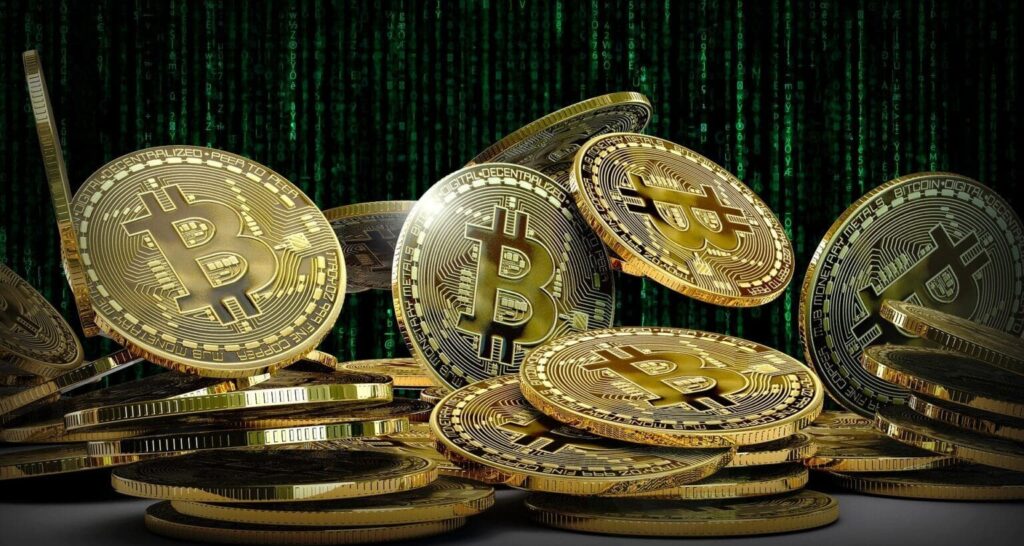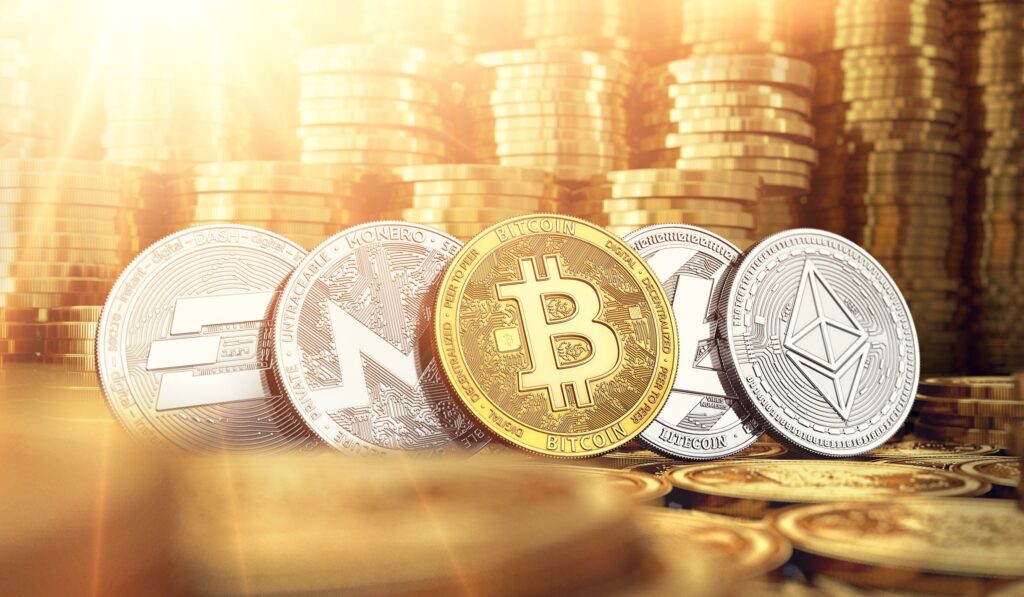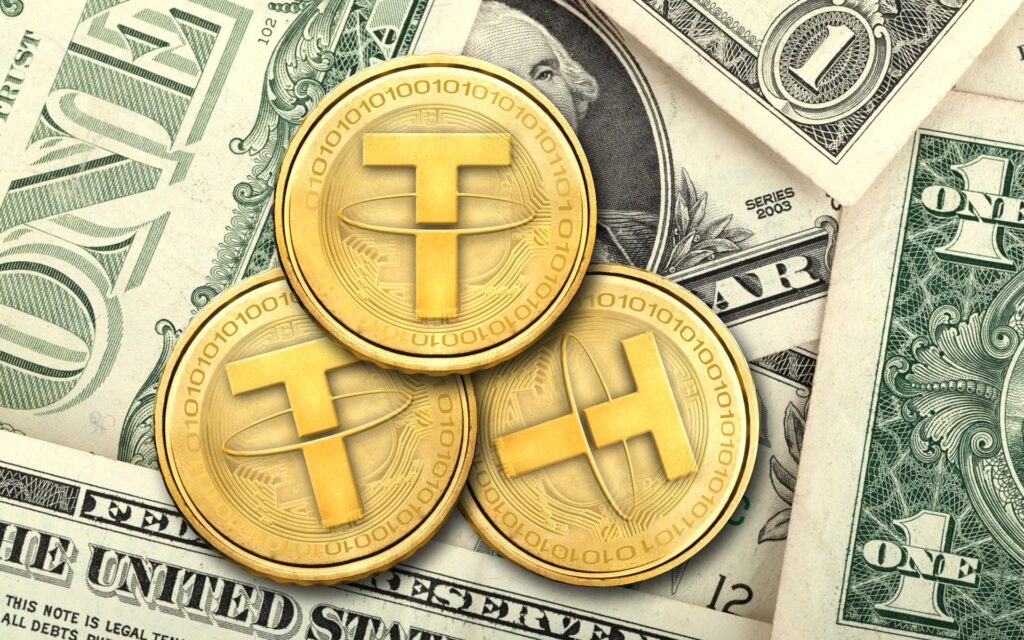In the ever-evolving landscape of cryptocurrency, one concept has risen to prominence as a potential game-changer: stablecoins. As cryptocurrencies like Bitcoin and Ethereum have soared to unprecedented heights, their notorious price volatility has become a double-edged sword, attracting both speculators and skeptics. In this uncertain terrain, stablecoins have emerged as a promising solution, offering the stability of traditional currencies while leveraging the power and efficiency of blockchain technology. This article delves into the heart of the crypto revolution, exploring the role of stablecoins and the fundamental question they pose to the world of digital currency: Are stablecoins the future?

Stablecoins, as the name suggests, are digital currencies designed to maintain price stability. Unlike their more volatile counterparts like Bitcoin, stablecoins are pegged to a reserve asset, which could be fiat currencies, commodities, or even a basket of cryptocurrencies. The idea behind them is simple: to offer the best of both worlds—combining the advantages of cryptocurrencies, such as fast and borderless transactions, with the stability and predictability of traditional money. As the cryptocurrency market continues to mature, stablecoins are rapidly finding their place in various applications, from facilitating cross-border remittances to underpinning the exploding world of decentralized finance (DeFi) and the unique world of non-fungible tokens (NFTs).
However, the journey of stablecoins towards becoming the cornerstone of digital currency is not without its challenges and controversies. Regulatory concerns, transparency issues, and the potential for market manipulation have raised important questions about their sustainability. This article will not only explore the promise of stablecoins but also dive into the risks and challenges they face on their path to revolutionizing the digital financial landscape.
Introduction to Cryptocurrency Revolution
The world of cryptocurrency has been a hotbed of innovation and transformation since the emergence of Bitcoin in 2009. Over the years, the crypto landscape has evolved from being a niche interest for tech enthusiasts to a global financial force that’s impossible to ignore. As new cryptocurrencies and blockchain projects continue to emerge, the industry has experienced a rollercoaster of highs and lows, with the total market capitalization reaching astronomical figures. However, at the heart of this tumultuous journey lies a fundamental issue that has perplexed both investors and everyday users: the inherent volatility of cryptocurrencies.
The crypto market’s notorious price fluctuations, exemplified by the breathtaking surges and sudden crashes of assets like Bitcoin, have posed a significant challenge. While these price movements have attracted traders and speculators, they’ve also deterred many from embracing digital currencies for everyday use. This is where stablecoins come into play. In a market characterized by wild price swings, stablecoins have emerged as a potential panacea, offering a much-needed solution to the problem of cryptocurrency’s inherent volatility. In the following sections, we’ll explore what stablecoins are, how they work, and their potential to reshape the future of digital currency in this ever-evolving crypto revolution.
Understanding Stablecoins
Stablecoins, at their core, are a unique breed of digital currencies designed to provide a stable value in a world known for its cryptocurrency price rollercoasters. These coins achieve stability through different mechanisms, and they can be categorized into several types. One common category is fiat-collateralized stablecoins, which are pegged to traditional, stable assets like the US dollar. Another category involves crypto-collateralized stablecoins, which rely on a reserve of other cryptocurrencies to back their value. Additionally, there are algorithmic stablecoins that use smart contracts and complex algorithms to maintain their price equilibrium, responding dynamically to market demand and supply.

The primary objective of stablecoins is to mitigate the price volatility that has plagued many traditional cryptocurrencies. They aim to do so by ensuring that for every unit of the stablecoin in circulation, there exists a corresponding reserve asset, typically held in a trusted custodian. This backing ensures that the stablecoin can be redeemed for a fixed value, similar to a one-to-one exchange with a stable asset. In the case of algorithmic stablecoins, their stability is maintained by a dynamic adjustment of their supply, either through algorithmic mechanisms or through incentives to holders and users. The result is a digital currency that offers the benefits of quick and efficient transactions while preserving the predictability of traditional money, making them a critical component in the quest for the future of digital currency.
Use Cases of Stablecoins:
The adoption of stablecoins has grown exponentially in recent years, driven by their versatility and stability. These digital assets find application in a myriad of real-world scenarios, showcasing their potential as a transformative force in the world of digital finance. One of the most impactful use cases of stablecoins is in the realm of cross-border remittances. Traditional cross-border transactions can be slow and costly due to intermediary banks and currency conversion fees. Stablecoins offer a swift and cost-effective alternative, enabling near-instant international transfers while bypassing these hurdles.
Another booming arena where stablecoins have made a substantial impact is decentralized finance (DeFi). DeFi protocols leverage the stability of stablecoins to provide users with decentralized lending, borrowing, and yield farming opportunities. By using stablecoins as collateral or for earning interest, users can access financial services without relying on centralized intermediaries, expanding financial inclusion and democratizing access to credit. Furthermore, stablecoins play a pivotal role in the explosive world of non-fungible tokens (NFTs). Artists, collectors, and content creators often prefer the price predictability of stablecoins when trading or pricing NFTs, as it offers a consistent reference point in a marketplace characterized by art, collectibles, and digital assets of diverse values.
What sets stablecoins apart from traditional cryptocurrencies and makes them particularly attractive in these use cases is their inherent stability. While cryptocurrencies like Bitcoin and Ethereum are renowned for their price volatility, stablecoins offer a dependable store of value and medium of exchange. This predictability ensures that users can transact and invest with confidence, unburdened by the anxiety of drastic price fluctuations. As the crypto market continues to evolve, stablecoins are emerging as a key enabler of financial innovation, bridging the gap between the crypto world and mainstream finance while offering newfound flexibility and reliability in digital transactions.
Challenges and Risks:
While stablecoins hold the promise of delivering stability and utility to the cryptocurrency landscape, they are not without their share of challenges and potential risks. One significant concern revolves around regulatory oversight. Governments and financial authorities worldwide have been scrutinizing the stablecoin sector, primarily because it operates at the intersection of traditional finance and the crypto world. The lack of a consistent regulatory framework has left the industry in a state of uncertainty, with concerns about money laundering, fraud, and the potential to disrupt traditional financial systems raising red flags.
Furthermore, the history of stablecoins is not without controversies. The most prominent example is the Tether (USDT) saga, a popular fiat-collateralized stablecoin. Tether faced allegations of lacking the necessary reserves to back its tokens, causing market turbulence and raising questions about its trustworthiness. Such controversies have a direct impact on investor confidence and the overall stability of the market, as these events can trigger sudden fluctuations in stablecoin values. These instances underline the importance of transparency, auditability, and regulatory compliance for stablecoin issuers and their long-term sustainability. As the stablecoin landscape continues to mature, it must navigate these challenges to cement its position as a reliable and integral part of the digital financial ecosystem.
Stablecoins and the Future of Digital Currency:
As we navigate the dynamic landscape of digital currency, stablecoins have emerged as a crucial and adaptable component within the broader cryptocurrency ecosystem. These digital assets are not only addressing the issue of volatility but are also playing a pivotal role in bridging the gap between traditional finance and the crypto world. Stablecoins have become the lubricant for various financial activities within the digital realm, facilitating rapid and cost-effective cross-border transactions, powering the DeFi revolution, and serving as a reliable pricing mechanism in the NFT space. In essence, stablecoins are poised to become the linchpin connecting the world of traditional finance with the decentralized and borderless world of cryptocurrency.

Looking forward, the trajectory of stablecoins is filled with potential for innovation and development. Cryptocurrency innovators are actively exploring new types of stablecoins, such as algorithmic and decentralized autonomous organizations (DAO)-backed stablecoins, which aim to enhance the reliability and autonomy of these assets. Additionally, as regulatory clarity improves and stablecoin projects evolve, these digital currencies are likely to find even broader applications in daily financial transactions, remittances, and international trade. The fusion of blockchain technology with stablecoins has opened up possibilities for central bank digital currencies (CBDCs) and interconnectivity between traditional fiat systems and the digital world. As stablecoins continue to mature and evolve, they are well-positioned to be at the forefront of the digital currency revolution, offering both stability and innovation in an ever-changing financial landscape.
Investor and Consumer Perspectives
Stablecoins have been gaining remarkable traction from both investors and consumers, each drawn by the unique advantages they offer in the digital currency space. Investors find stablecoins appealing for a variety of reasons, primarily driven by the combination of stability and accessibility. In a crypto market notorious for its price volatility, stablecoins provide a safe haven for investors looking to park their capital during market downturns or periods of uncertainty. Additionally, the use of stablecoins in the DeFi space has created attractive opportunities for yield farming and lending, making them an appealing choice for those seeking passive income in the crypto realm.
Consumers, on the other hand, have embraced stablecoins for their practicality and efficiency. The ability to conduct cross-border transactions quickly and affordably using stablecoins has proven especially advantageous for individuals and businesses involved in international trade and remittances. Additionally, the predictability of stablecoin values offers consumers a reliable store of value for everyday transactions, providing a bridge between traditional and digital financial systems.
For individuals considering the use or investment in stablecoins, there are important considerations to keep in mind. First and foremost, it’s essential to carefully evaluate the trustworthiness and transparency of the stablecoin issuer, ensuring they maintain appropriate reserves and regulatory compliance. Additionally, understanding the specific use cases and applications of stablecoins is crucial, as their value proposition varies depending on the context. As with any financial asset, risk management is key, and diversifying across different stablecoins and asset classes can provide a balanced approach. While stablecoins offer a valuable bridge between the traditional and digital financial worlds, investors and consumers should approach them with due diligence, seeking to harness their advantages while mitigating potential risks.
Conclusion:
In the ever-evolving landscape of cryptocurrency, stablecoins have emerged as a beacon of stability in a sea of volatility. Their ability to provide the best of both worlds, combining the efficiency of blockchain technology with the reliability of traditional money, has made them a transformative force in the world of digital finance. As we’ve explored in this article, stablecoins play a vital role in a variety of real-world applications, from cross-border remittances to underpinning the expanding universe of decentralized finance (DeFi) and the flourishing world of non-fungible tokens (NFTs). Investors and consumers alike are increasingly recognizing the potential of stablecoins, embracing their unique advantages.
Nevertheless, the path forward for stablecoins is not without its challenges. Regulatory concerns and controversies surrounding certain stablecoin issuers underscore the need for a more robust and standardized regulatory framework to ensure their long-term sustainability and integrity. The evolving landscape of digital currency presents both opportunities and risks, and the adoption of stablecoins must be guided by prudence and due diligence. As the digital financial ecosystem continues to evolve, stablecoins are positioned to play a central role in its future, offering a bridge between the traditional financial system and the decentralized world of cryptocurrency.
In conclusion, the world of digital currency is on the cusp of a revolution, and stablecoins stand at its forefront. Their promise of stability, versatility, and efficiency has the potential to redefine how we conduct financial transactions and interact with the global economy. Whether they ultimately become the future of digital currency will depend on how the industry addresses its challenges, navigates regulatory landscapes, and continues to innovate. In the ever-changing landscape of cryptocurrency, one thing remains clear: stablecoins have opened the door to new possibilities, and they are here to stay.





Add comment